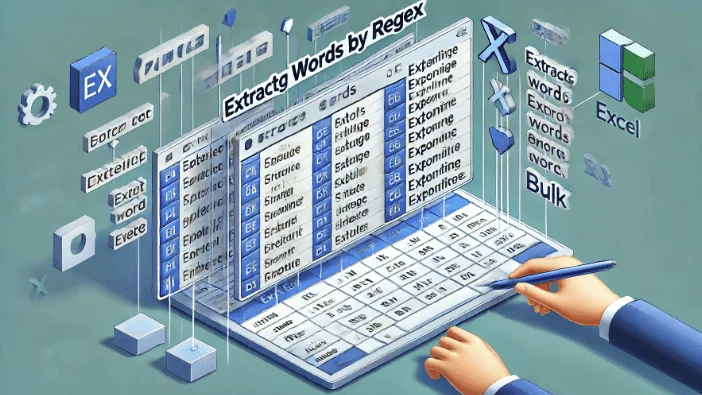Table of Contents
Is Excel Slow? Crashing? The Reasons Why and a Fast, Simple No-Code Solution | SheetFlash


Why Excel is Slow and Crashing
Excel is a widely used tool in everyday business, but when dealing with large datasets or complex formulas, it can become slow or even crash. These issues not only disrupt workflow but also lead to data loss and reduced efficiency.
This problem is especially noticeable during data analysis and report generation. Every time Excel freezes, work grinds to a halt, resulting in missed deadlines and reduced productivity across teams.
The Main Reasons Why Excel Slows Down
There are many reasons why Excel can become slow, but the impact is most evident when working with large datasets or complex formulas. Let’s explore these reasons in detail.
1. Processing Large Amounts of Data
Excel struggles when processing datasets with tens of thousands or even millions of rows. Each calculation or data read/write operation is applied to every cell, which causes processing time to increase exponentially.
When using features like filters, pivot tables, or sorting on large datasets, Excel often slows down and can eventually freeze or crash, leading to frustration and lost productivity.
2. Using Complex Formulas and Functions
Another major cause of Excel slowdown is the use of complex formulas and functions. In particular, functions like VLOOKUP and SUMIFS consume far more computing resources than simpler functions.
How VLOOKUP Works and Its Impact on Performance
VLOOKUP is a function that searches a specified range for a value and returns a corresponding value from another column. The search is performed row by row, starting from the top of the range.
For example, if VLOOKUP is used to search a dataset with 100,000 rows, Excel must check each row in sequence to find the value. This can cause the following issues:
Increased Search Time: Because VLOOKUP checks each row one by one, larger data ranges result in more search operations and significantly longer calculation times. If multiple cells use VLOOKUP, Excel runs the search individually for each one, causing overall performance to slow dramatically.
Inefficient Algorithm: VLOOKUP relies on a linear search algorithm, meaning the time it takes to process increases in direct proportion to the amount of data. As the data range grows, calculation time increases, leading to a noticeable drop in Excel’s responsiveness.
How SUMIFS Works and Its Impact on Performance
SUMIFS is a function that sums values based on multiple criteria. While it is very useful, applying it to large datasets can lead to performance problems due to its processing mechanism:
Evaluating Conditions: SUMIFS checks each cell in the specified range to see if it meets the given conditions. In cases where the dataset is large, this repeated evaluation significantly increases the processing load.
Handling Multiple Conditions: When multiple conditions are involved, Excel needs to scan the data multiple times, once for each condition. The more conditions there are, the higher the computational cost, and the slower Excel becomes.
Comparing to Other Functions
Compared to simpler functions like SUM or AVERAGE, which only perform basic arithmetic calculations, functions like VLOOKUP and SUMIFS involve more complex operations. These lookup and aggregation functions must repeatedly scan through ranges to check conditions or find specific values, leading to much greater use of computing resources and a corresponding slowdown in performance.
3. Inefficient Use of Macros and VBA
While VBA and macros are excellent for automating Excel processes, poorly optimized code can lead to serious performance issues. When working with large datasets, inefficient loops or unnecessary recalculations in VBA can cause Excel to slow down or even crash. Running the same operation repeatedly on large data without optimization results in excessive use of memory and CPU resources.
4. Links Between Multiple Sheets or Files
When multiple sheets or workbooks are linked, Excel's performance can degrade significantly. This is because Excel continuously checks and updates data between linked sheets, and as the number of links increases, so does the workload on Excel, leading to slower performance and frequent crashes.
Problems Caused by Excel Slowdowns
When Excel slows down, it creates multiple challenges in the workplace.
1. Decreased Work Efficiency
When Excel lags, tasks take much longer to complete, causing workflows to become disrupted. This is particularly problematic for businesses that rely heavily on Excel for daily operations.
2. Missed Deadlines
Slow or crashing Excel can delay projects and tasks, making it difficult to meet deadlines. This can impact the entire team’s schedule and negatively affect client deliverables.
3. Increased Risk of Errors
When Excel freezes, there is a risk of losing unsaved data. Each time Excel crashes or needs to be restarted, there is a chance for errors, which can compromise data accuracy and consistency.
The SheetFlash Solution for Speeding Up Excel
How SheetFlash Prevents Freezes: The Key Difference from Excel
SheetFlash is a no-code solution that eliminates the bottlenecks that slow down Excel, significantly speeding up work processes. This effect is particularly noticeable when processing large datasets or handling complex workflows.
1. Cloud-Based Processing Prevents Freezes
SheetFlash’s Advanced Functions are processed in the cloud, rather than on the user’s computer. This means your PC isn’t overloaded with heavy calculations, and unlike Excel, SheetFlash can process even large datasets without freezing. Operations that would normally take hours can be completed quickly and smoothly, thanks to cloud-based processing.
2. Easy, No-Code Operation
SheetFlash is a no-code tool, meaning that no programming knowledge is required. You can automate complex Excel tasks with simple drag-and-drop operations, completing tasks much faster than manually doing them in Excel. This makes workflows smoother and eliminates the risk of freezing.
3. Efficient Handling of Large Data
With SheetFlash, you can easily process tens of thousands of rows of data without experiencing the freezes common in Excel. By offloading processing to the cloud, SheetFlash reduces the burden on your computer, making large data management much more efficient.
Why Businesses Choose SheetFlash
1. Intuitive Interface
SheetFlash has an intuitive drag-and-drop interface, making it easy to create and adjust workflows. Employees can quickly start using the tool without needing extensive training, boosting productivity from day one.
2. Replacing VBA and Macros with No-Code Solutions
Traditional VBA and macros can be time-consuming to set up and maintain. With SheetFlash, these functions can be replaced by no-code solutions, performing the same tasks faster and more efficiently without the need for complex programming.
3. Optimizing Excel Performance
By automating processes that would otherwise slow Excel down, SheetFlash enables you to perform daily tasks more smoothly. Automating specific workflows reduces Excel’s load, making it run more efficiently.
The Best Solution to Excel’s Performance Issues
SheetFlash is the ideal no-code solution for overcoming Excel’s slowdowns and freezes. By automating tasks and leveraging cloud-based processing, SheetFlash pushes beyond Excel’s limits, enabling smooth workflows and faster data processing. This improvement in performance helps businesses accelerate their digital transformation (DX) and increase operational efficiency.
“Start using SheetFlash today to solve your Excel problems and optimize your workflow!”








